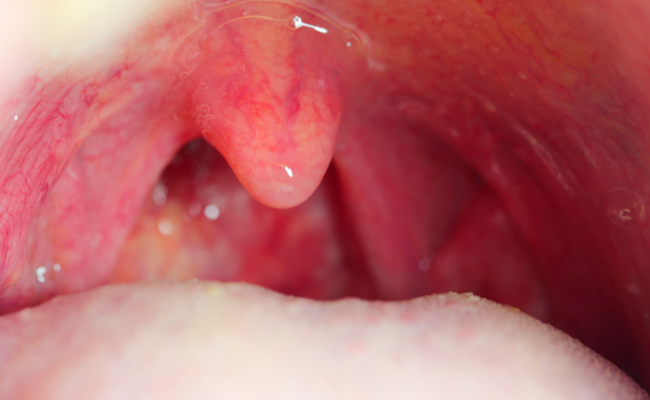How to Treat Nosebleed?
- November 30, 2023
- No Comments
What are Nosebleeds?
Nosebleeds, or epistaxis, happen when blood vessels in the nose break and bleed. While generally not alarming, they can be unsettling and may demand attention if persistent or severe. Dry air is a significant factor, drying out nasal membranes and increasing susceptibility to bleeding. Trauma, such as accidents or nose picking, can also lead to nosebleeds. Certain medical conditions, like allergies or infections, can compromise blood vessel integrity in the nasal passages, making them more prone to bleeding. Epistaxis, characterized by blood loss from the nasal tissue lining, is usually not serious, but understanding its causes is crucial for effective treatment and prevention.
Why Nosebleeds occurs?
- Understanding the causes of nosebleeds is essential for addressing the issue comprehensively. Dry air, as mentioned earlier, can dry out the nasal membranes and make them more susceptible to bleeding. It's essential to stay hydrated and use humidifiers, especially in dry environments, to maintain optimal moisture levels in the nasal passages.
- Trauma to the nose, whether accidental or self-induced through nose picking, can lead to the rupture of blood vessels. It's crucial to handle the nose delicately to avoid unnecessary irritation.
- Medical conditions such as allergies, infections, and blood clotting disorders can compromise the integrity of blood vessels. Managing these underlying conditions with appropriate medical interventions can help prevent recurrent nosebleeds.
- Environmental factors, such as exposure to irritants or pollutants, can also contribute to nosebleeds. Avoiding exposure to such substances and maintaining a clean and healthy environment can be beneficial.
How to manage Nosebleeds?
When confronted with a nosebleed, it's important to approach the situation calmly and methodically. Here's a step-by-step guide on how to manage nosebleeds effectively:
- Stay Upright: Keep your head elevated. While it might be a natural instinct to tilt your head back, this can cause blood to flow down the throat, leading to potential complications. Instead, maintain an upright position to reduce blood flow to the nasal vessels.
- Pinch the Nose: Using your thumb and index finger, pinch the soft part of your nose together. Apply gentle pressure by squeezing the nostrils closed. This helps to constrict the blood vessels and reduce bleeding.
- Breathe Through Your Mouth: While pinching your nose, breathe through your mouth to ensure a continuous airflow. This prevents the inhalation of blood and reduces the risk of choking.
- Apply Cold Compress: Placing a cold compress or ice pack on the bridge of the nose can help constrict blood vessels and slow down bleeding. Avoid placing ice directly on the skin; instead, wrap it in a cloth or towel.
- Avoid Nose Blowing: Refrain from blowing your nose for a few hours after a nosebleed. This allows the blood vessels to heal and reduces the risk of re-bleeding.
- Humidify the Air: Using a humidifier at home can add moisture to the air, preventing the nasal passages from drying out and reducing the likelihood of nosebleeds, especially in dry environments.
- Nasal Saline Spray: Regular use of a saline nasal spray can keep the nasal passages moist and help prevent nosebleeds, especially in individuals prone to dry nasal membranes.
Treatment Solutions:
While the aforementioned steps are effective for managing common nosebleeds, persistent or severe cases may require medical intervention. Medical professionals may recommend various treatments based on the underlying cause and severity of the nosebleeds.
- Cauterization: This involves using a chemical (silver nitrate) or electric current to seal off the bleeding blood vessels in the nose. Cauterization is often employed for recurrent nosebleeds.
- Nasal Packing: In cases of severe bleeding, nasal packing may be necessary. This involves placing gauze or an inflatable latex balloon into the nasal cavity to apply pressure and stop the bleeding.
- Blood Vessel Ligation: For recurrent nosebleeds caused by specific blood vessels, ligation (tying off) of these vessels may be considered to prevent further bleeding.
- Medication: In some cases, prescription medications, such as nasal corticosteroids, may be recommended to reduce inflammation and prevent nosebleeds, especially for those with underlying conditions like allergies.
Benefit Points:
Understanding how to treat nosebleeds empowers individuals to take control of this common issue. Here are several benefits associated with effective nosebleed management:
- Quick Resolution: Following the proper steps when a nosebleed occurs can lead to quick resolution, minimizing discomfort and inconvenience.
- Prevent Recurrence: By addressing underlying causes and adopting preventive measures, individuals can reduce the likelihood of recurrent nosebleeds.
- Improved Quality of Life: Managing nosebleeds effectively contributes to an improved quality of life, preventing disruptions caused by unexpected bleeding episodes.
- Less Anxiety: Knowing how to handle nosebleeds reduces anxiety associated with this issue. Preparedness and knowledge empower individuals to respond calmly and effectively.
- Avoid Complications: Prompt and appropriate treatment helps prevent potential complications, such as excessive blood loss or infection.
- Enhanced Comfort: Keeping the nasal passages moist through the use of humidifiers and saline sprays enhances overall nasal comfort, reducing the risk of nosebleeds.
- Medical Intervention when Necessary: Seeking medical attention when needed ensures that underlying issues are addressed, preventing the persistence of nosebleeds.











Comments (0)
No comments yet